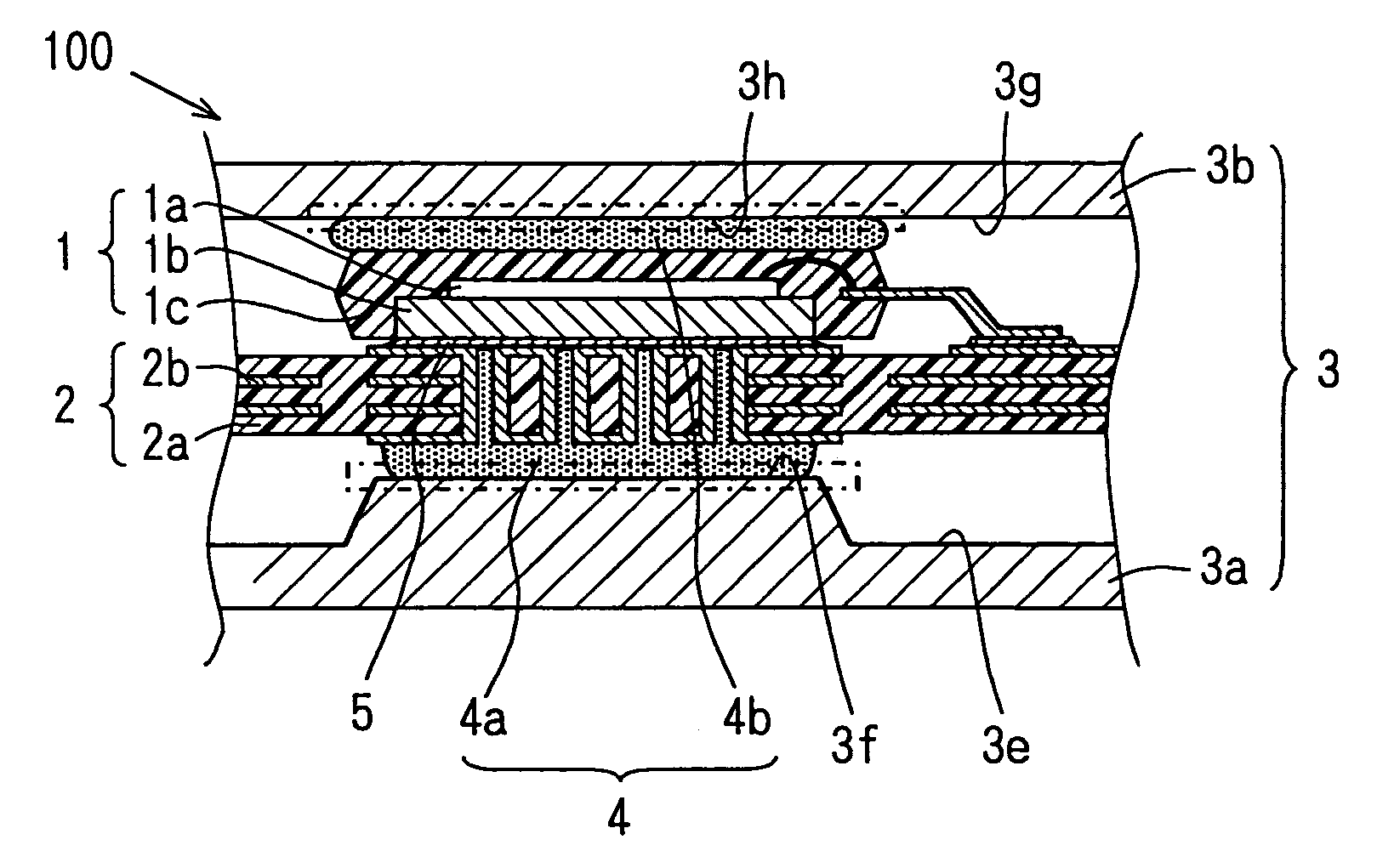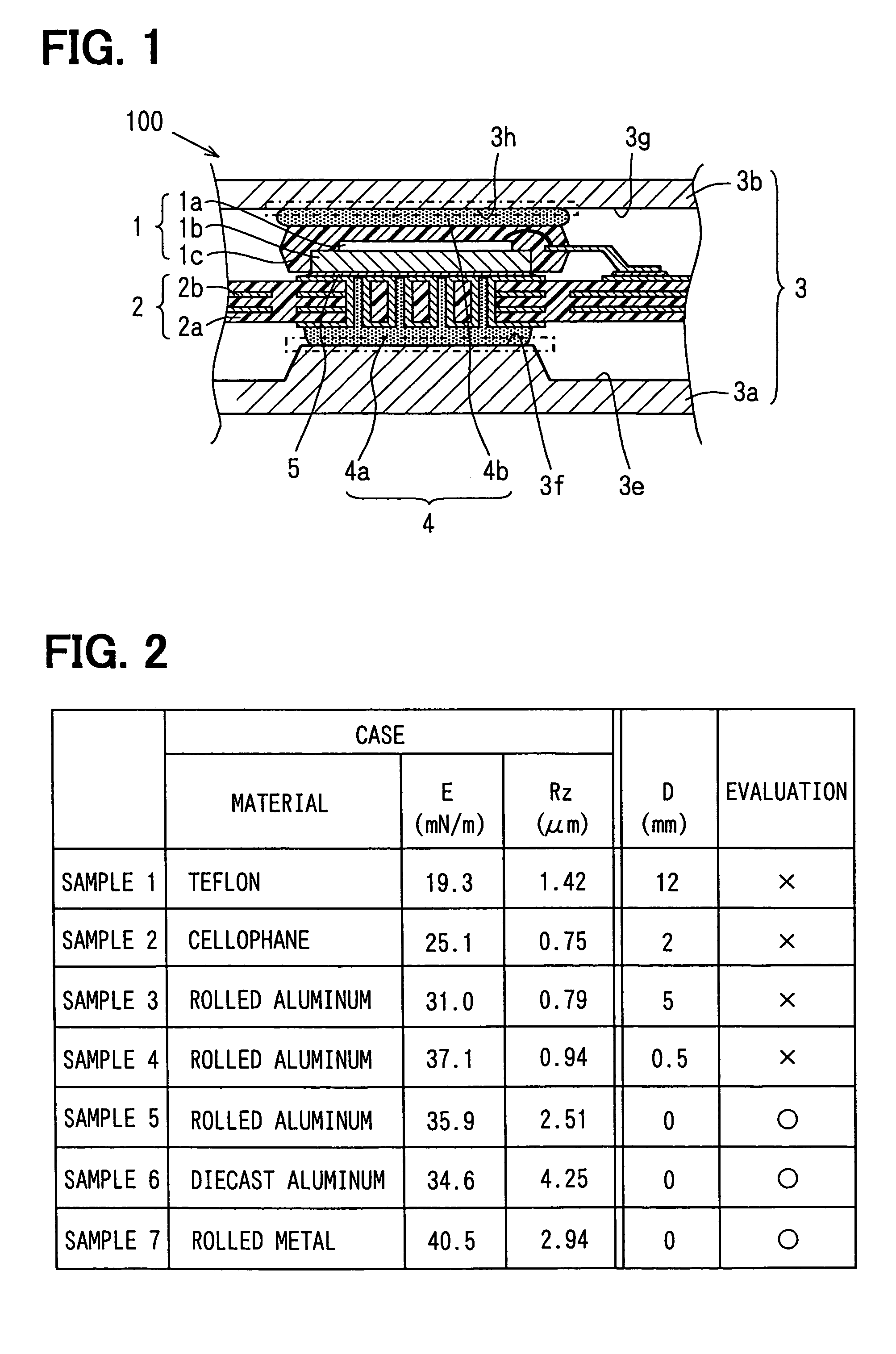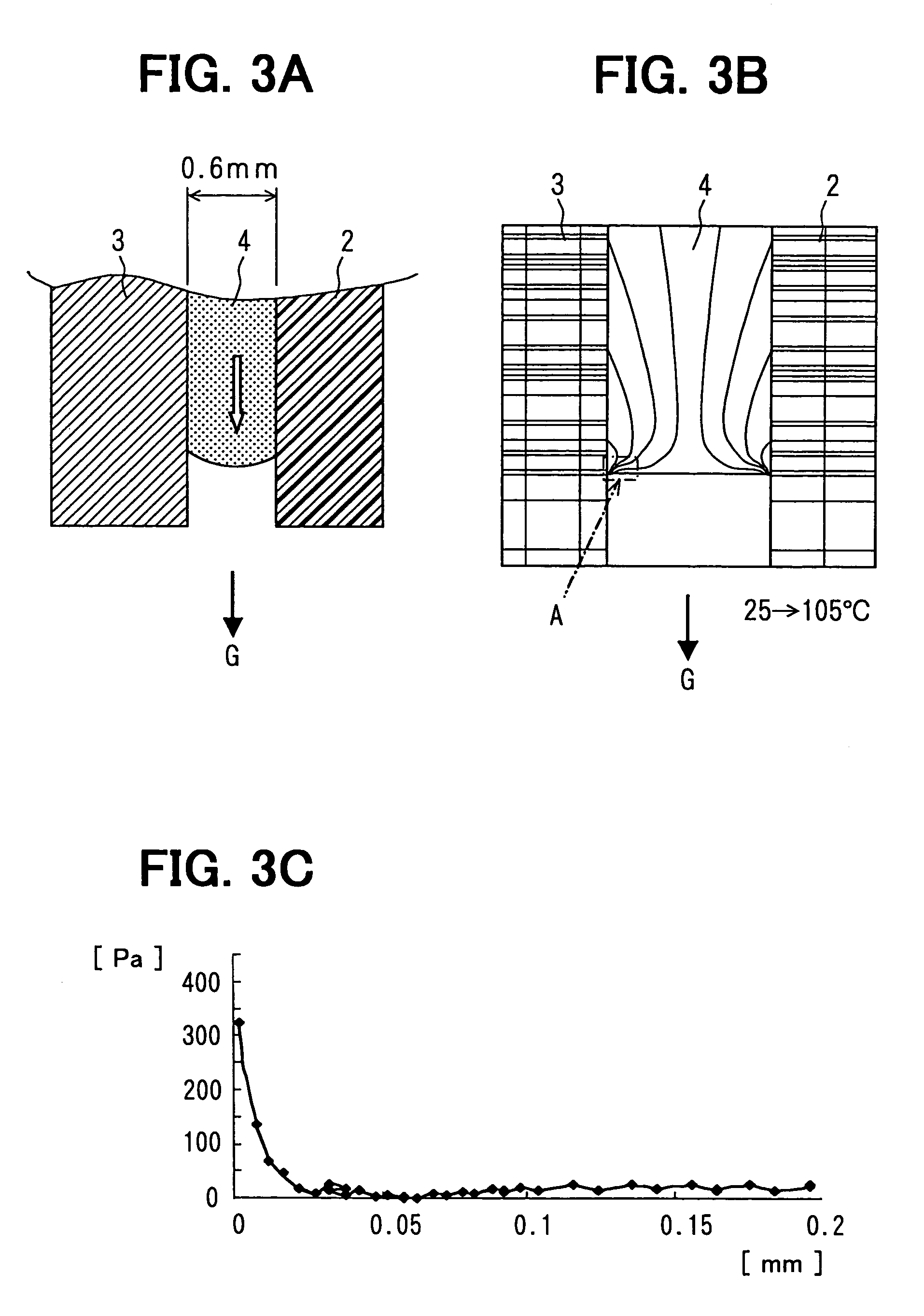Heat dissipation structure
- Summary
- Abstract
- Description
- Claims
- Application Information
AI Technical Summary
Benefits of technology
Problems solved by technology
Method used
Image
Examples
first embodiment
[0028]Referring to FIG. 1, a heat dissipation structure 100 includes a heat-producing electronic component 1, a circuit substrate 2, and a case 3, grease 4, and solder 5. The electronic component 1 is constructed of a semiconductor chip 1a that produces heat, a base 1b,and a resin 1c. The semiconductor chip 1a is mounted on the base 1b and molded with the resin 1c. The substrate 2 is a commonly used multilayer printed circuit substrate having an insulating base 2a and conductive patterns 2b formed in multiple layers.
[0029]The electronic component 1 is mounted on the substrate 2 by soldering the base 1b to the conductive patterns 2b formed on the surface of the substrate 2. The case 3 having thermal conductivity is constructed of a lower case 3a and an upper case 3b for housing the electronic component and the substrate 2. The grease 4 is provided between the lower case 3a and the substrate 2 and between the upper case 3b and the electronic component 1 for transmitting heat produced ...
second embodiment
[0039]In a vehicle, circuit substrates are installed in various positions and in conditions that temperature greatly varies. In such conditions, the grease tends to move in the direction of gravitational force due to a cooling cycle. For example, when the temperature changes from 25° C. to 105° C., the grease 4 thermally expands in the direction indicated with a white arrow in FIG. 3A. The thermal stress that is applied to the grease 4 immediately before the grease starts moving is analyzed by the finite element method. The arrangement of the substrate 2, the case 3 and the grease 4 and the conditions of the grease 4 in the analysis are shown in FIG. 3A.
[0040]When the grease 4 thermally expands, shear stresses are produced as shown in FIG. 3B. The stress concentration occurs around edges of the contact surfaces of the grease 4. The contact surfaces are surfaces that contact with the substrate 2 or the case 3. The edge of the contact surface that contacts with the case 3 is indicated...
third embodiment
[0050]Referring to FIG. 6A, a case 35 and the substrate 2 have flat contact surfaces 35f and 2f that contact with the grease 4 when the grease 4 is provided between them. The case 35 is made of die-casting aluminum. It is tilted relative to the flat contact surface 2f so that a gap between them is smaller at one end (narrow end) than at the opposite end (broad end). 0.2 ml of the grease 4 is provided in the gap in a manner that its thickness is equal to or less than 1 mm and cooling cycle tests are performed. Temperatures are changes between −40° C. and 125° C. and moving distances D2 of the grease 4 are measured in the cooling cycle tests. The results of the cooling cycle tests are shown in FIG. 6B.
[0051]When the grease 4 is thermally expanded, the thickness of the grease 4 is small at the narrow end and large at the broad end. In general, flow resistance of fluid becomes large as a flow path becomes narrow. Therefore, the grease 4 expands towards the broad end, namely, the movemen...
PUM
| Property | Measurement | Unit |
|---|---|---|
| Thickness | aaaaa | aaaaa |
| Angle | aaaaa | aaaaa |
| Viscosity | aaaaa | aaaaa |
Abstract
Description
Claims
Application Information
 Login to View More
Login to View More - Generate Ideas
- Intellectual Property
- Life Sciences
- Materials
- Tech Scout
- Unparalleled Data Quality
- Higher Quality Content
- 60% Fewer Hallucinations
Browse by: Latest US Patents, China's latest patents, Technical Efficacy Thesaurus, Application Domain, Technology Topic, Popular Technical Reports.
© 2025 PatSnap. All rights reserved.Legal|Privacy policy|Modern Slavery Act Transparency Statement|Sitemap|About US| Contact US: help@patsnap.com



